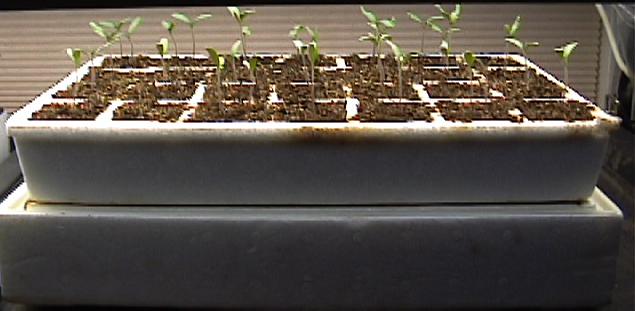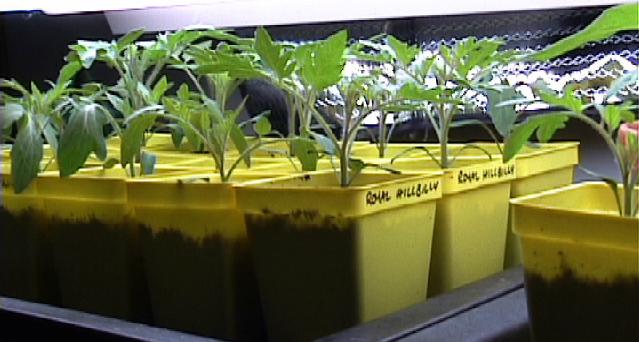Growing Seedlings Under Lights
When we decided to raise our own transplants, we knew we would need a light table. There are many plans available for those who want to build their own, but we were not that ambitious or confident, and so we went for the Floralight High Intensity model. It was expensive, but we had two incomes at the time.
It has been a very good product. Everything is heavy-duty, and it should last forever.
Quality of light
The most important thing about a light table isn't the table, though, it's the light, which is pretty much entirely dependent on what bulbs you use. The bulbs that are sold as companions to the system are ridiculously expensive. There is no way we could say that it's worth spending $12.50 per tube to get good light. However, we bought some with our system, and the plants do well under them.
The top shelf is the most-used. The first seedlings of every season start there, and then move down to the lower levels as new seeds are planted. Accordingly, the top shelf has the cheapest bulbs: a cool white, a warm white, and two Verilux full-spectrum (the ones that came with the system). We're in our fourth season on them, and the quality of light has diminished enough that it is time to replace them.

We use the lower shelves for seedlings that have been potted up, since we figure their true leaves stand to benefit more from higher-quality light. Each shelf has two Sylvania Grow-Lux, which are quite pink, and two of the Verilux, which are bluish. This is the recommended color combination, although there are cheaper full-spectrum fluorescent tubes available. There is a noticeable difference in the health of plants grown on the bottom shelves compared to those we have left on the top shelves.

For now, the lower shelves' lights are still going strong, but when it comes time to replace them, we will probably go for plant/aquarium bulbs rather than the cheapest option of cool white + warm white, for the same reason that we got the high-intensity (four tubes per shelf) system rather than the ordinary (two tubes) system: we want the stockiest, healthiest transplants we can grow.
Care
Some growers keep their lights on 24 hours a day, but most will advise you that plants need some downtime. In any case, there's certainly no advantage to keeping the lights on more than 16 hours a day. Accordingly, we have ours on a timer which keeps them on 15 1/2 hours per day.
We try to keep the plants near the center of the lights, as much as possible. Near the ends of the tubes, the intensity fades; the four tubes don't span the whole width of a tray, either. Sometimes, we have to really take advantage of all available tray space, but when we don't, we leave a few inches of space around all the outside edges of the trays.
As the plants grow, they like to spread like umbrellas, and we indulge them. Commercial growers pack tomatoes tightly to conserve on greenhouse space, but the plants are bigger and healthier when they can spread out to grab more light.